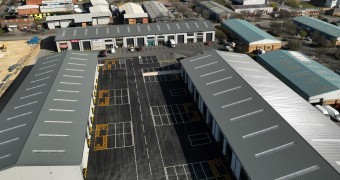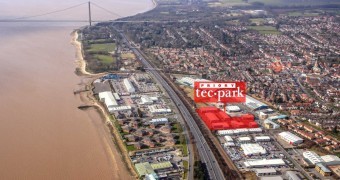Introduction to BREEAM
As sustainability continues to be a key focus in the construction industry, BREEAM stands out as one of the most recognised frameworks for assessing a project’s environmental performance.
But what is BREEAM, and how does it contribute to the construction process?
What is BREEAM and what does it stand for?
BREEAM stands for the Building Research Establishment Environmental Assessment Methodology.
It is a globally recognised assessment system that provides a comprehensive framework to measure the sustainable value and performance of various projects, including buildings, infrastructure, and communities.
Originally founded in 1990 by the Building Research Establishment (BRE), BREEAM has since evolved into a leading standard for sustainability with over 2 million registered assets.
By offering valuable insights, it helps ensure projects meet sustainability targets, maximise performance, and enhance long-term value, all contributing to a net zero future.
What categories are assessed by BREEAM?
BREEAM evaluates and measures the performance of a wide range of factors to holistically determine a project’s sustainability through third-party certification, covering the design, construction, and operation phases of an operation.
Each category is assessed against influential factors, earning ‘credits’ based on how well the project performs. The factors evaluated include:
- Energy and water usage
- Health & wellbeing
- Management processes
- Pollution control
- Transport
- Materials
- Waste management
- Ecology and land use
- Resilience and innovation
Commercial property solutions
Our team of building consultants provide a range of commercial property solutions, from specialist building surveys to architecture and education funding application support. Speak to one of our experts to find out how we can help you deliver your objectives.
How to get BREEAM certification
-
Locate a licenced BREEAM assessor
They are responsible for evaluating the project against BREEAM's assessment criteria. -
Enrol your project
The project must be registered with BREEAM via the Building Research Establishment (BRE) to begin the formal assessment process. -
Assessment phases
Pre-assessment: During the design stage, the assessor provides an initial evaluation and sets sustainability targets that the project must aim to achieve.
Design stage assessment: This involves submitting plans and documentation for evaluation based on the specific categories. Once approved by the assessor, it is sent to the BRE for quality assurance before receiving its interim design stage certificate.
Post-Construction Stage: A final assessment is conducted to confirm that the project meets the sustainability targets set during the design stage. A project’s final BREEAM certificate will only be awarded once approved by the assessor, and any queries from the BRE’s quality assessment team are addressed.
How to achieve an “Excellent” BREEAM rating
Upon its certification, the project is assigned one of the following ratings:
- Outstanding: Represents the top 1% of new non-domestic buildings in the UK
- Excellent: Falls within the top 10% of UK new non-domestic buildings
- Very Good: Places in the top 25% of UK new non-domestic buildings
- Good: Within the top 50% of UK new non-domestic buildings
- Pass: Among the top 75% of UK new non-domestic buildings

Achieving a BREEAM rating of “Excellent” requires a project to score highly in multiple assessment categories. To reach this level, construction teams need to focus on implementing best practices such as:
-
Early planning and clear goal setting
Incorporate sustainability from the beginning and set well-defined objectives that align with the BREEAM criteria.
-
Work with BREEAM Assessors
Engage licensed professionals as soon as possible to guide the project through the certification process.
-
Prioritise energy-efficiency
Energy efficiency, the joint-highest section accounting for 15%, requires implementing measures like optimising building design, integrating renewable energy sources, and utilising efficient systems.
-
Embrace innovation and smart technology
As credits are awarded for innovative ways to maximise efficiency, technologies such as detection sensors and smart HVAC systems should be implemented.
-
Undertake lifecycle analysis (LCA)
Lifecycle analysis (LCA) can help identify opportunities to maximise sustainability by measuring the project’s environmental impact and provide recommendations for improvement.
-
Don’t overlook user well-being
The health & wellbeing section, also weighed at 15%, means buildings need to be user-friendly, prioritising ergonomics to maximise user satisfaction.
Why BREEAM matters in construction
BREEAM is becoming increasingly crucial, with many local authorities and stakeholders requiring the certification to achieve excellent or higher, in order to carry out large construction plans and commercial buildings.
It not only ensures that projects meet current corporate social responsibility (CSR) objectives and promote environmentally friendly practices, but it also enhances long-term project value by reducing operational costs and differentiating it in a competitive market.
Experts in commercial property
Contact our team of leading auctioneers, property agents, and RICS-qualified surveyors today.












